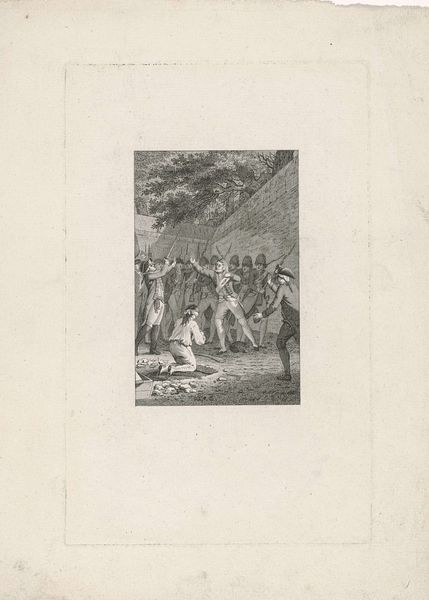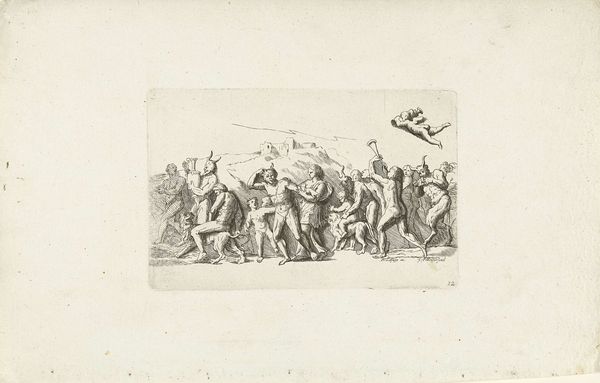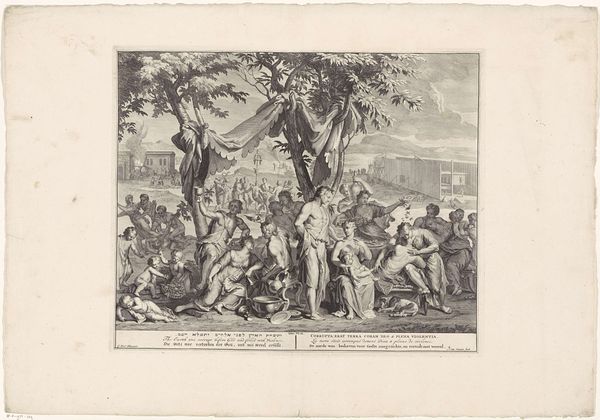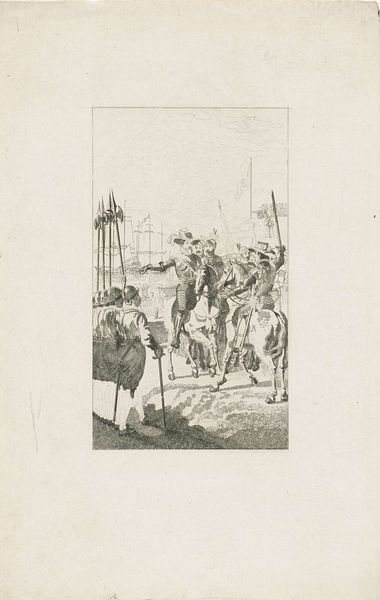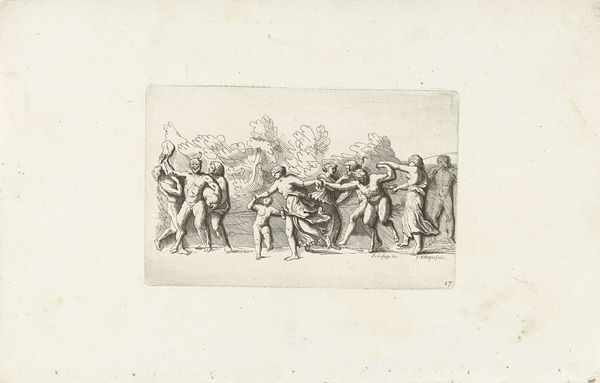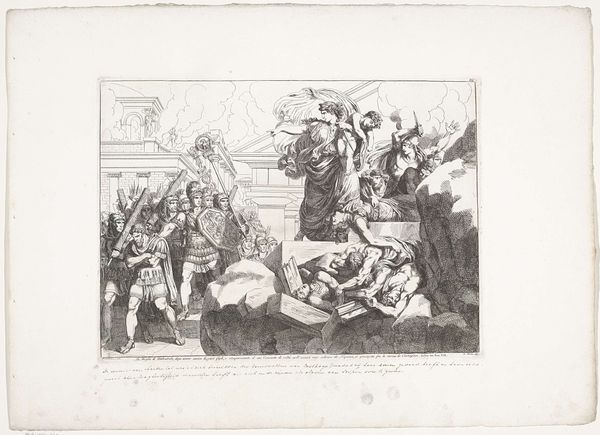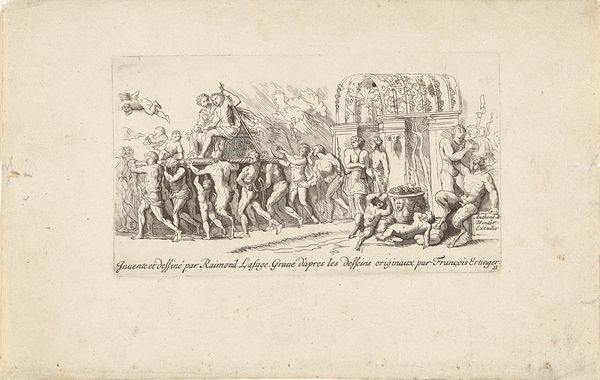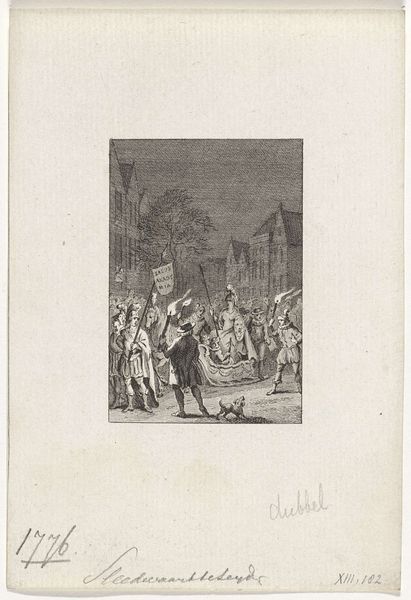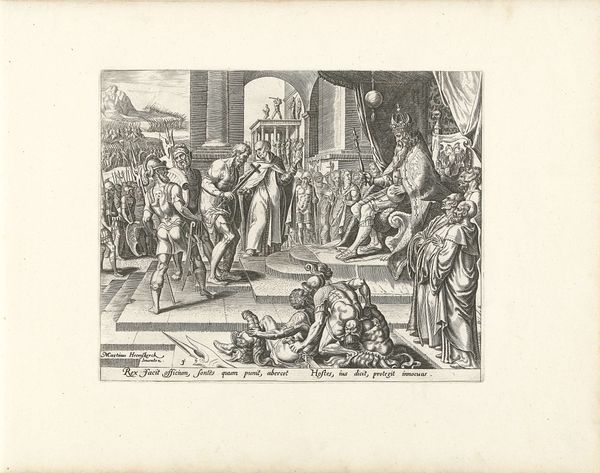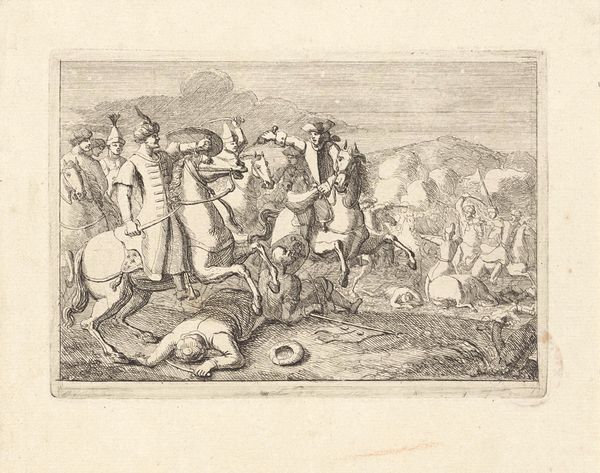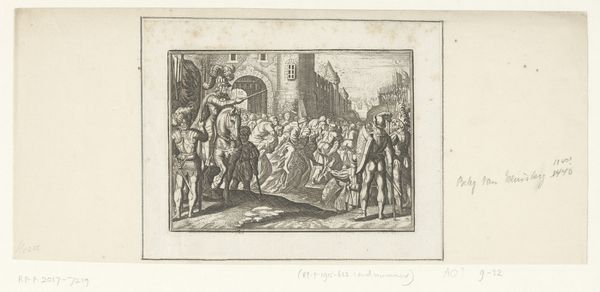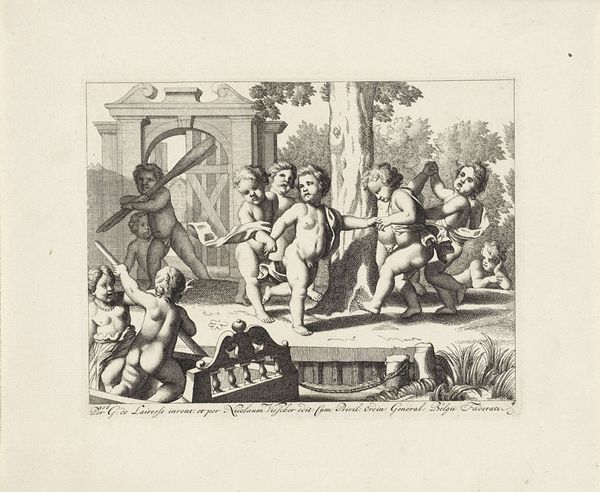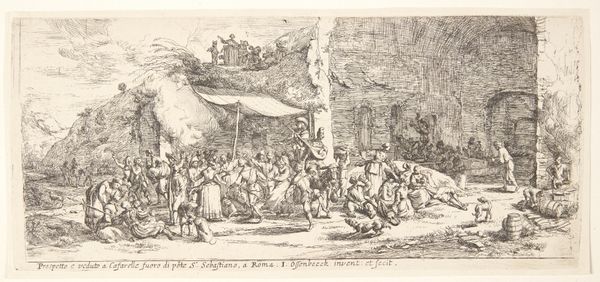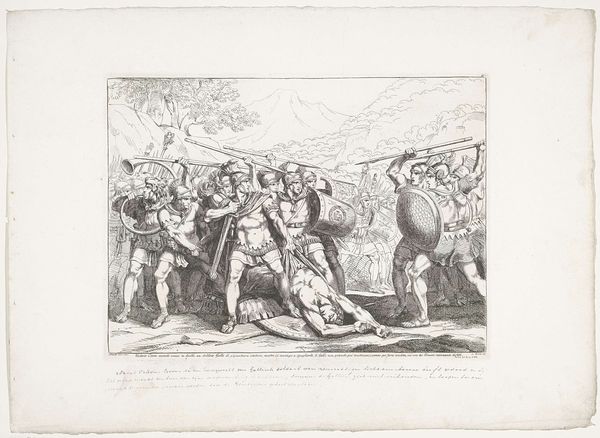
Hendrik VII wordt gekroond nadat hij Richard III verslagen heeft 1728
0:00
0:00
bernardpicart
Rijksmuseum
print, engraving
#
narrative-art
#
baroque
# print
#
old engraving style
#
figuration
#
line
#
history-painting
#
engraving
Dimensions: height 142 mm, width 173 mm
Copyright: Rijks Museum: Open Domain
Editor: Here we have Bernard Picart’s 1728 engraving, "Hendrik VII wordt gekroond nadat hij Richard III verslagen heeft," which translates to "Henry VII is crowned after defeating Richard III." It’s a bustling scene, chaotic almost, but celebratory. What do you see in this piece, in terms of the era it represents and its place within visual culture? Curator: What I notice first is how Picart situates this historical event within a framework of power and legitimacy. Consider the conventions of Baroque art in the 18th century; prints like this were less about objective historical record and more about crafting a narrative that supported particular political ideals. This image serves to legitimize Henry VII's claim to the throne, visually reinforcing a historical narrative that benefits the ruling class. Notice how Henry is elevated above the crowd, quite literally raised up – it's a statement of divinely sanctioned authority. Editor: That makes a lot of sense. I hadn't thought about it as consciously constructing a specific viewpoint. How might the act of creating and disseminating this print itself play a role? Curator: Excellent question! Printmaking allowed for wider distribution and influence than painting, shaping public opinion. So, while ostensibly documenting a past event, Picart's work functions within the context of his present. It subtly reminds viewers of the importance of stable leadership, which, in 18th-century Europe, often meant monarchical power. It’s all very deliberate. Can you see how this could reflect social values during that time? Editor: Now that you point it out, it seems less like a detached record and more like active propaganda. So the Rijksmuseum having it is fascinating: it preserves not just history, but a viewpoint *on* history. Curator: Exactly. It demonstrates the powerful relationship between art, historical narratives, and the socio-political landscape, reminding us that museums themselves participate in shaping historical perception. Editor: Well, I'll certainly view prints differently from now on! Thanks. Curator: Likewise. Understanding the social life of images is so enriching.
Comments
No comments
Be the first to comment and join the conversation on the ultimate creative platform.
